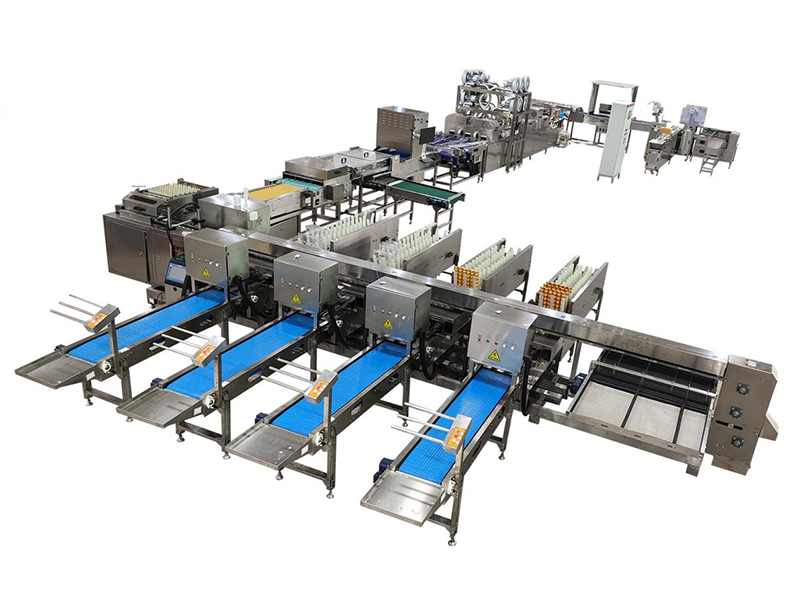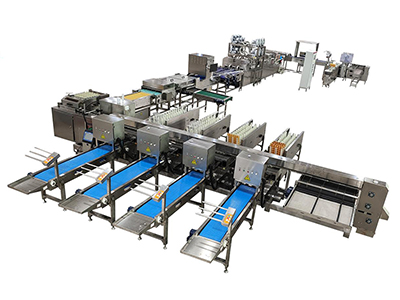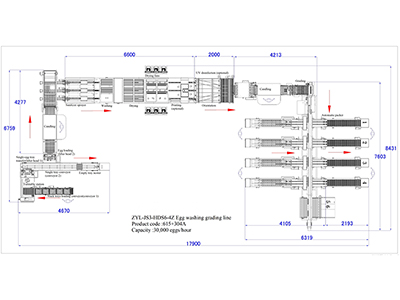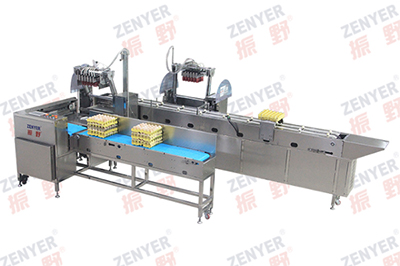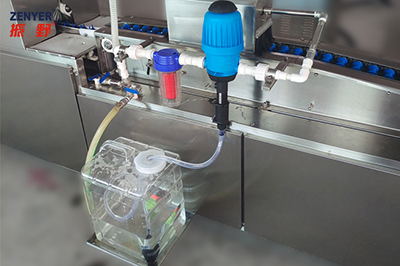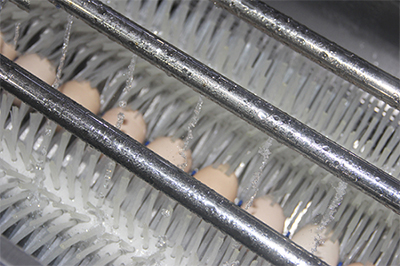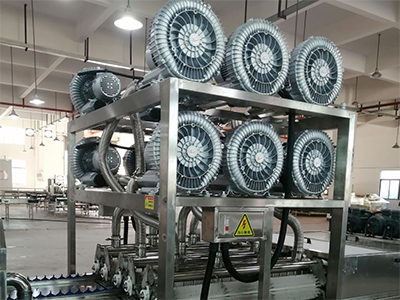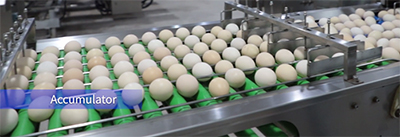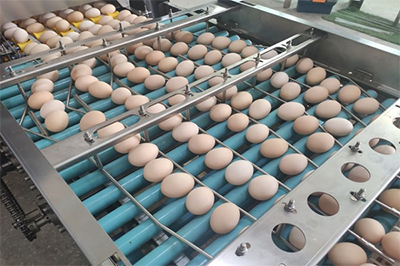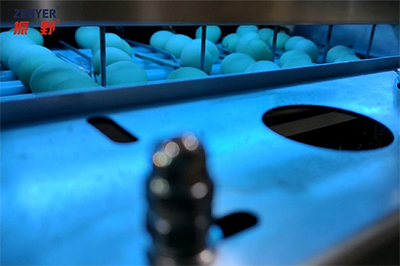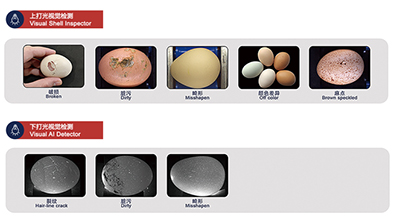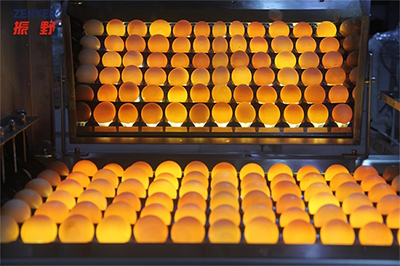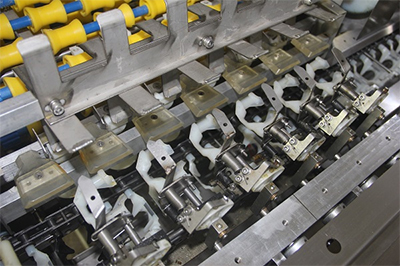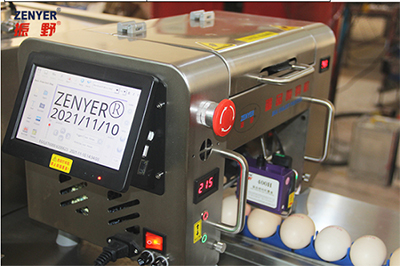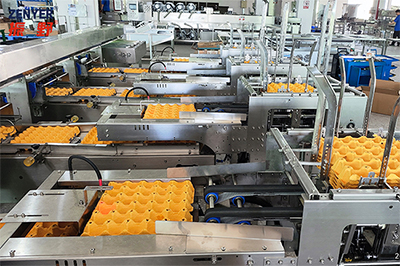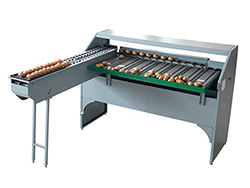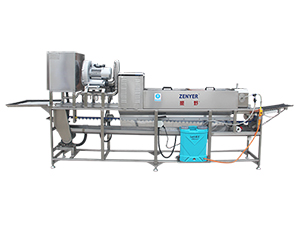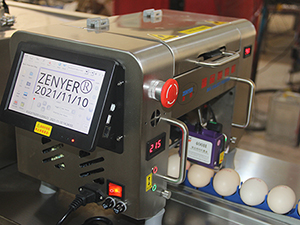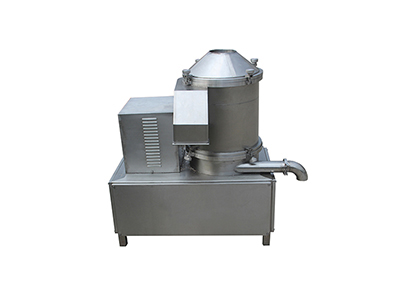- Home
- Products
- Egg Processing Line
- 304A Egg Processing Line
304A Egg Processing Line with Cleaning & Grading (30,000 EGGS/HOUR)
The 304A egg processing line consists of the 204A egg washer and 109 egg grader, designed to process up to 30,000 eggs per hour. This high-efficiency line includes an egg accumulation module belt, candling system, sanitizing, washing and drying stages, egg orientation, grading, and automatic electronic data reporting. It also features automatic packaging and an undergrade egg collection table. For added convenience, the system can be connected to the 615 automatic egg loader or directly linked to the central egg accumulating belt from the chicken house. Optional upgrades include UV disinfection, inkjet printing, visual AI, as well as automatic de-nesting and tray stacking machines, making this an ideal solution for efficient and high-quality egg processing.
| Product name | Egg Processing Line |
| Product code | 304A |
| Model | ZYL-JS3-HDS6-4Z |
| Capacity | 30,000 eggs/hour |
| Material | Stainless steel |
| Power * | 39.4kW |
| Voltage | 380V, 50HZ, 3-phase |
| Dimension (L*W*H) | 17.9*8.44*2 M |
| Net weight * | 3070 KG |
| Gross weight * | 4490 KG |
| Function | Accumulating & candling & egg flow diverting, sanitizing, washing, drying, accumulating & orientation, candling, grading & data reporting, auto-packing and off-grade table; Optional automatic egg loader, UV disinfection, egg printer and visual AI detector, de-nester and tray stacker |
- Automatic Egg Loader/Connect to the Rod Conveyor (Optional)
- Accumulating & Candling & Egg Flow Diverting
- Sanitizing
- Wahsing
- Drying
- Accumulating
- Orientation (Optional UV Disinfection)
- Visual AI Detecting (Optional)
- Candling
- Grading & Data Reporting Generated Automatically
- Egg Printing (Optional)
- Auto Packing
- Auto Tray Denesting (Optional)
- Auto Tray Stacking (Optional)
- Collection For Undergrade Eggs
The system connects to the egg washer and includes an egg accumulation module belt, six-row candling, and sorting guide mechanism. LED light strips are positioned under the rollers, allowing the eggs to be illuminated as they pass through. Operators can manually sort out defective eggs, including broken, misshapen, dirty, and black-hearted eggs. After candling, the sorting guide organizes the eggs into three single rows, leading them to the triple-row washing machine rollers.
Connect to the Rod Conveyor
Directly connected to the central egg conveyor belt from the poultry house, eggs flow automatically into the accumulation module. The system is designed to handle high egg volume, with sensors slowing down the conveyor to prevent egg breakage by ensuring proper egg spacing.
For sites without direct connection to a central egg conveyor belt, the optional 615 automatic egg loader is recommended. This system automatically lifts eggs from trays and transports them to the accumulator via a conveyor belt, while empty trays are stacked at the end of the conveyor for manual removal.
The triple-channel washing machine uses a minimum of 450 liters of water per hour (150 liters per channel), with specially designed brush structures ensuring that every part of the egg’s surface is cleaned. Brush speed can be adjusted based on the level of dirt on the eggs, reducing the risk of shell damage while maintaining the highest level of cleanliness and minimal water usage.
The eggs pass through a specially designed orientation device, which automatically turns them to ensure the larger end (air cell) faces upward during packaging. This orientation helps extend shelf life. An optional UV disinfection module can be added to sanitize the eggshells, ensuring compliance with higher food safety standards.
The visual AI system uses non-contact technology, where high-definition cameras installed above the detection unit capture images of the eggs on the feed rollers. Using near-infrared (NIR) light and advanced image processing techniques combined with AI algorithms, the system automatically detects defects such as large crack, hair line crack, dirty, or other imperfections. Defective eggs are automatically removed from the processing line, ensuring that only high-quality eggs continue through the system.
The 109 egg grader system divides eggs into 4-7 weight classes with a grading accuracy of ±1 gram, processing 30,000 eggs per hour. Data for each batch of eggs, including the weight of each grade, the number of eggs per grade, the number of egg cartons and trays, and the number of defective eggs (such as dirty, deformed, or broken eggs) are displayed in real-time on an electronic data sheet. If the machine is equipped with the optional visual AI detection system, the number of eggs with defects will also be recorded. This data can be exported to external applications, such as Excel, for easy storage. The system’s unique intelligent self-diagnostic function will display fault reasons on the screen in the event of a malfunction, helping users quickly identify and resolve issues. The grading machine is also equipped with Wi-Fi capability, enabling remote monitoring and diagnostics via the internet. In case of software issues, the system can be quickly fixed and updated remotely.
The 401H egg printer, a single-head inkjet printer, can be installed on the egg grading machine. As eggs pass through the optical sensor under the printer, it triggers the printing process. The inkjet printer can print text, numbers, logos, images, date formats (including Julian date), and expiry dates.
An optional 401Y egg printer, a single-head inkjet printer, can also be installed, linked with the grading machine’s PLC control program. The printing content can be customized based on egg weight. For example, grade 1 eggs will be printed with C1, grade 2 with C2, grade 3 with C3, and so on.
The standard configuration includes 4 automatic packing machines and 1 manual egg collection table. The number of packing machines can be adjusted according to your needs. The graded eggs are automatically allocated to the corresponding egg tray filling machines based on the system settings. The automatic packing machines support egg cartons and trays in various configurations, including 2×5, 2×6, 3×5, 3×6, and 5×6. Users can choose from paper trays, plastic trays, or foam trays based on their requirements. Each automatic packing machine handles one grade of eggs.
Eliminates the need for manual labor by automatically stacking 6 trays of eggs into a standard-sized stack. This helps streamline the packing process, making it much faster and more efficient when loading the stacked trays into packaging boxes.
In addition to the eggs processed by the automatic packing machines, any remaining eggs, including those that are too large or too small, fall onto the undergrade egg collection table. The table can be divided into three sections to separate these undergrade eggs, ensuring that only the highest-quality eggs are sent for packaging.
Shenzhen ZENYER Egg Machinery Co., Ltd.
Add.: 136, Jiangshi Road, Matian Street, Guangming District, Shenzhen 518106, China
Tel.: +86-755-26974700 / 26974701
Fax: +86-755-26974358
Email: office@zenyer.cn
WhatsApp: +86-13823737025
Wechat: +8618038158337
+8618018763375

